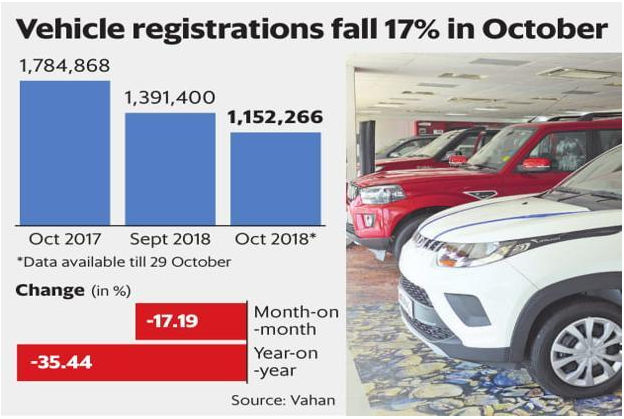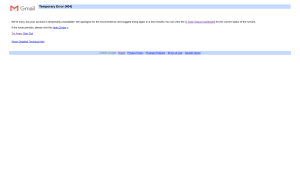Introduction
The festive season in India is typically a time of joy and celebration, with consumers flocking to purchase new cars. However, this year’s Dussehra season brought a shocking blow to the auto industry, as car sales plummeted in October. Despite the traditional festivities, vehicle registrations declined significantly, revealing a sharp decline in consumer sentiment. In this article, we will delve into the factors that contributed to this decline, including increased insurance premiums and high fuel prices. We will also explore the regional variations in car sales and the implications for the industry as a whole.
The Impact of Rising Insurance Premiums and Fuel Prices
One of the key factors that impacted car sales during the Dussehra season was the increase in insurance premiums. The cost of ownership for vehicles rose significantly, eroding consumer confidence. Additionally, the skyrocketing fuel prices further added to the operating costs for consumers. These two factors combined to create a challenging environment for car sales.
Anil Sharma, an associate director at MarketsandMarkets, a market research firm, highlighted the impact of these changes, stating, “In the last two months, the situation has changed for the worse, given that higher interest rates and insurance premiums have increased the cost of ownership, while fuel prices have also raised operating costs for consumers.”
Regional Variations in Car Sales
The decline in car sales during the Dussehra season was not uniform across all regions of India. In Gujarat, for example, car registrations dropped by a staggering 85%. West Bengal followed closely with a 37% decline, while Uttar Pradesh and Haryana experienced declines of 23% and 22%, respectively. Maharashtra, on the other hand, saw a 13% fall, with Delhi being the only exception, where new registrations actually increased by 2.7%.
These regional variations highlight the diverse factors at play in different parts of the country. It is essential to consider the cultural and economic factors specific to each region when analyzing the impact on car sales.
Impact on Different Vehicle Categories
While the decline in car sales was evident across the board, certain vehicle categories were hit harder than others. Sales of cars and sports utility vehicles (SUVs) experienced a more significant decline compared to two-wheelers. Commercial vehicles, on the other hand, continued to show favorable sales growth.
The current economic scenario, coupled with increased insurance premiums and fuel prices, has had a more substantial impact on the demand for cars and SUVs. An anonymous Hyundai dealer in Uttar Pradesh highlighted the disappointment, stating, “We took inventory expecting 50% more retail than September, which was a dull month, along with Shradh, but this year Dussehra was extremely disappointing.”
Factors Contributing to the Decline
Multiple factors contributed to the decline in car sales during the Dussehra season. Let’s explore some of the key factors below:
1. Increased Insurance Premiums
The sudden increase in insurance premiums had a significant impact on consumer sentiment. For example, a (Honda) Activa, a popular two-wheeler, saw a 2.5% increase in insurance costs, impacting the overall affordability for consumers.
2. High Fuel Prices
The rising fuel prices have hit consumers’ pockets hard, leading to increased operating costs for vehicle owners. The combination of high insurance premiums and fuel prices has deterred many potential buyers from making new car purchases.
3. Natural Disasters
The severe floods in Kerala and the subsequent drop in demand for vehicles in the state also contributed to the decline in car sales. Additionally, the West Bengal government’s decision to ban the sale of motorcycles to those without a driving license further dampened sales in the region.
4. Economic Slowdown
The overall economic slowdown in the country has also had a substantial impact on consumer behavior. With higher interest rates and increased costs of ownership, consumers are becoming more cautious with their spending, particularly on big-ticket items like cars.
The Implications for the Auto Industry
The sharp decline in car sales during the Dussehra season is a cause for concern for the auto industry. With September already being a lackluster month for sales, the drop in October further exacerbates the challenges faced by industry players. The subdued sales during the festive season do not bode well for the remainder of the fiscal year.
Dealers of two-wheelers and four-wheelers have reported subdued sales, with a significant decrease in retail demand. A Mahindra dealer in Rajasthan stated, “Sales have really been subdued this year… Compared to October 2017, retail sales have fallen by 13-15%.”
Conclusion
The Dussehra season brought a shock to the auto industry as car sales cratered in October. The increase in insurance premiums and high fuel prices were the primary culprits behind the decline in consumer sentiment. Regional variations in car sales and the impact on different vehicle categories further illustrate the challenges faced by the industry. The implications for the auto industry are significant, with subdued sales during the festive season indicating a difficult road ahead. As the industry navigates through these challenges, it will be crucial to adapt to changing consumer preferences and economic conditions to revive car sales in the coming months.
Primary Keyword: Dussehra impact on car sales Secondary Keywords: declining car sales, rising insurance premiums, high fuel prices, regional variations, economic slowdown, auto industry implications
Additional Information:
- Include relevant statistics and data to support the points made in the article.
- Use examples and anecdotes to provide a more comprehensive understanding of the topic.
- Incorporate expert opinions and insights from industry professionals to add credibility and depth to the article.
- Include a conclusion that summarizes the key points discussed and offers a final thought on the topic.


No comments! Be the first commenter?